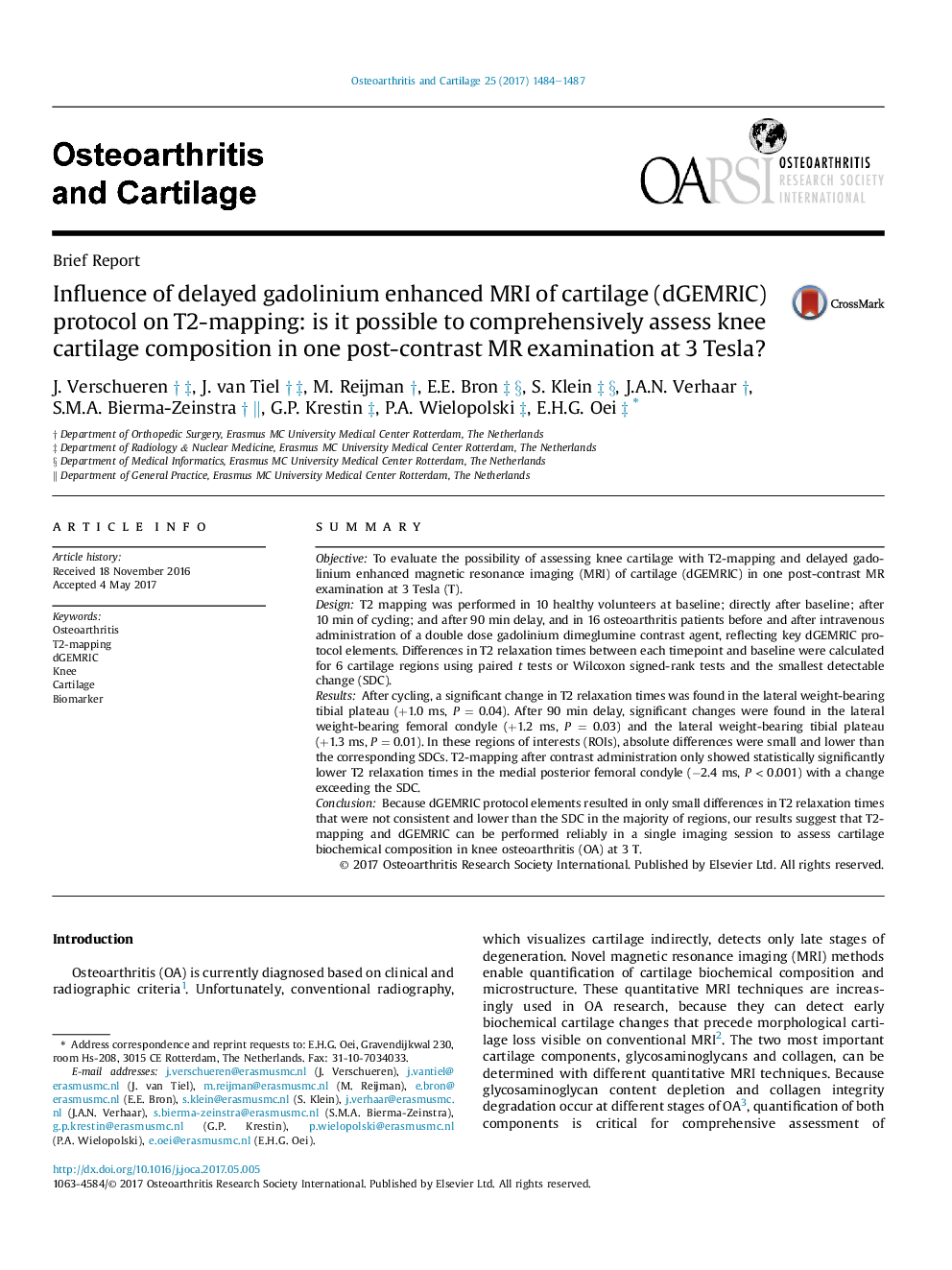| Article ID | Journal | Published Year | Pages | File Type |
|---|---|---|---|---|
| 5669244 | Osteoarthritis and Cartilage | 2017 | 4 Pages |
SummaryObjectiveTo evaluate the possibility of assessing knee cartilage with T2-mapping and delayed gadolinium enhanced magnetic resonance imaging (MRI) of cartilage (dGEMRIC) in one post-contrast MR examination at 3 Tesla (T).DesignT2 mapping was performed in 10 healthy volunteers at baseline; directly after baseline; after 10Â min of cycling; and after 90Â min delay, and in 16 osteoarthritis patients before and after intravenous administration of a double dose gadolinium dimeglumine contrast agent, reflecting key dGEMRIC protocol elements. Differences in T2 relaxation times between each timepoint and baseline were calculated for 6 cartilage regions using paired t tests or Wilcoxon signed-rank tests and the smallest detectable change (SDC).ResultsAfter cycling, a significant change in T2 relaxation times was found in the lateral weight-bearing tibial plateau (+1.0Â ms, PÂ =Â 0.04). After 90Â min delay, significant changes were found in the lateral weight-bearing femoral condyle (+1.2Â ms, PÂ =Â 0.03) and the lateral weight-bearing tibial plateau (+1.3Â ms, PÂ =Â 0.01). In these regions of interests (ROIs), absolute differences were small and lower than the corresponding SDCs. T2-mapping after contrast administration only showed statistically significantly lower T2 relaxation times in the medial posterior femoral condyle (â2.4Â ms, PÂ <Â 0.001) with a change exceeding the SDC.ConclusionBecause dGEMRIC protocol elements resulted in only small differences in T2 relaxation times that were not consistent and lower than the SDC in the majority of regions, our results suggest that T2-mapping and dGEMRIC can be performed reliably in a single imaging session to assess cartilage biochemical composition in knee osteoarthritis (OA) at 3Â T.
